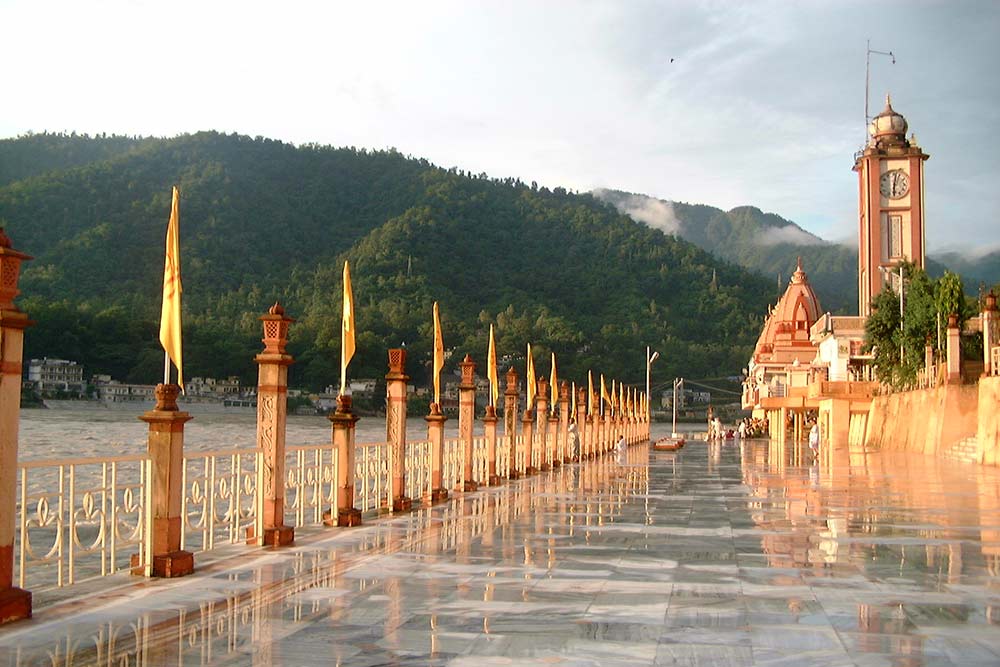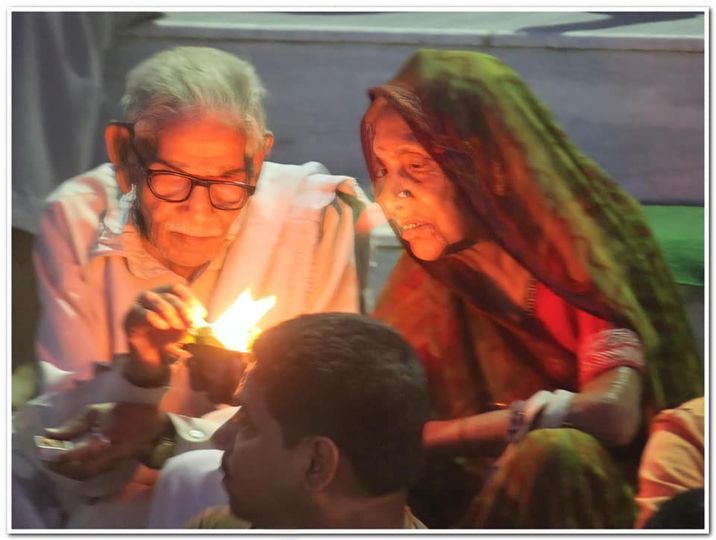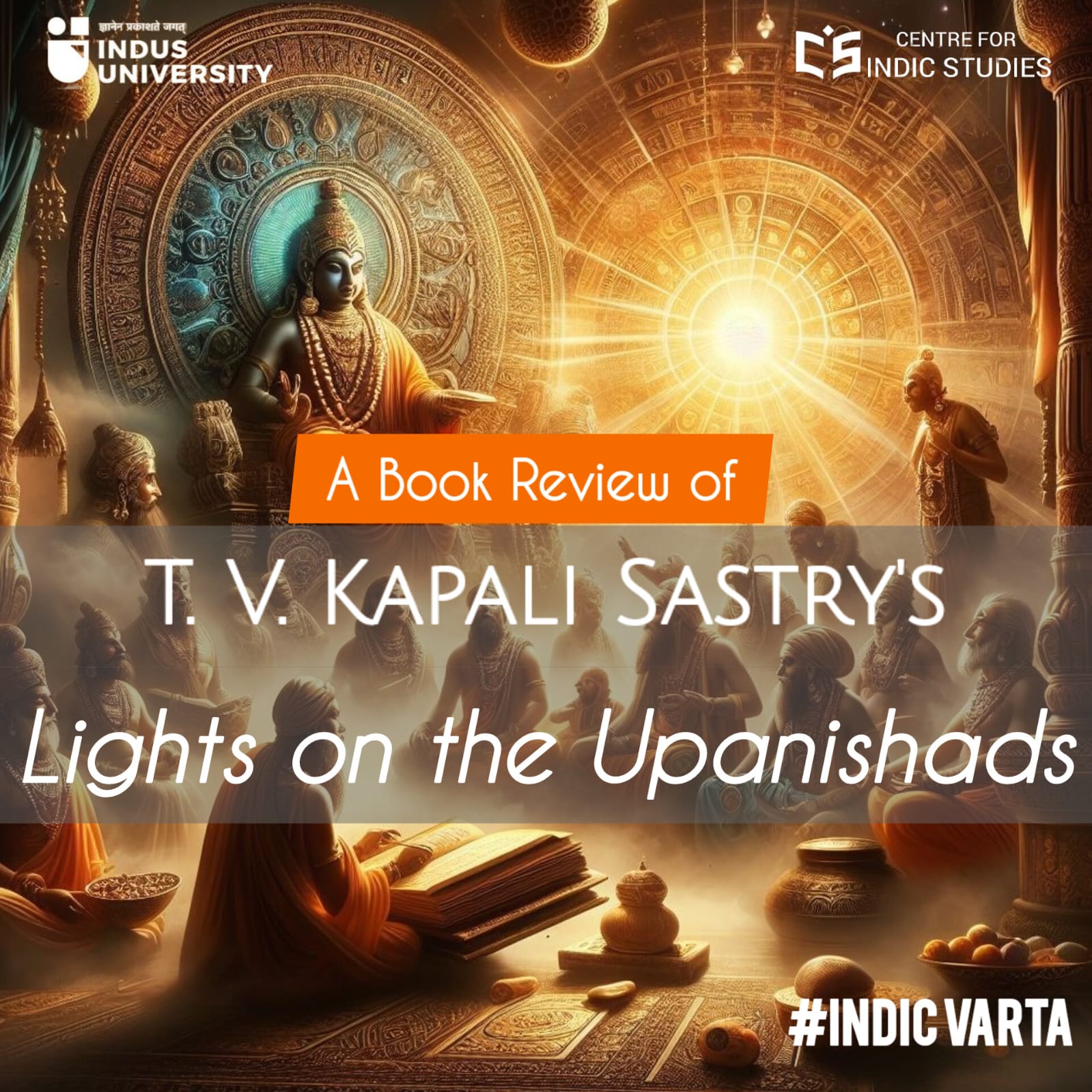- Visitor:13
- Published on:
Shef’s Dharmic Trail. Flames of Faith.
In this first part of her travelogue series, Shefali Vaidya narrates her experiences as she travels through Rishikesh.

A Pundit and a Sardar are sitting on the banks of the Ganga talking. No. This is not the beginning of a joke. This is how the twisted skein of life unravels itself here in Rishikesh, thread by silken thread.
Rishikesh is a place where the mundane merges with the mystic, where the sacred smudges into the secular and the jade green, swirling waters of the eternal river witness it all.

For the Pundit and the Sardar, it is probably a part of their daily routine, to sit on the banks of the Ganga, dipping their bare feet into the water, watching the sun hide behind the jagged outline of the Shivaliks. As the sun begins to disappear, they both moisten their hands in the river, touch their eyes and head, and sit quietly, their hands folded, eyes closed.
I leave them to their silent prayers and walk towards the Ram Jhoola. It is almost time for the evening Ganga Arati. As I walk down the Ram Jhoola, one of the two suspension bridges spanning the Ganga in Rishikesh, looking at the translucent green waters of the great river eddying beneath me, it strikes me how ridiculously easy it is to leave your everyday life behind here.
The warm smiles of the people you meet, the hypnotic sound of religious chants emanating from tiny music stores, the multilingual menu cards displayed outside small hole-in-the-wall eateries that claim to provide everything from organic muesli to ‘pooched’ eggs, the profusion of ashrams…everything lends a faint tinge of otherworldliness to Rishikesh. The troubles of the world seem far removed from the gentle, undulating patterns of life in this small town on the banks of the Ganga.
I am brought out of my reverie by a stubborn bull blocking my way. Behind me, a group of pilgrims from Rajasthan is walking in a single file, waiting to cross the bridge in time for the Ganga Arati at the Parmaarth Niketan Ghat. It is a narrow bridge, barely wide enough for three people to walk side-by-side comfortably.
From the other side, a two-wheeler is approaching. It is driven by a western tourist in a saffron kurta and the obligatory rudraksh maala wound around his neck. He stops the bike, switches off the ignition, and waits for the bull to move of its own volition. For a few moments, we all stand there, – animal, machine, humans – all sharing the same floating space. There is no irritation, no muttered curses, none of the tearing, anarchic hurry that you see so often on Indian roads.
Finally, the bull gives us a slightly puzzled glance and ambles away. The bike revs up, the Rajasthanis pick up pace to make up for lost time, and life continues as before.
Everywhere around me, there are these little stills of life. Below, on the ghats there is a Sadhu drying his saffron robes. Just ahead of me, a woman is pointing out the Ganga to her infant. The mother joins the baby’s hands together and says ‘Pranaam karo Gangamaiyyako’. The baby gurgles happily.
Finally, I reach the ghats. The preparations for the Arati are already well under way. The steps are full of people. The yellow and orange clad young sadhaks from Parmaarth Niketan control the crowd with rigid discipline.
By now, the sun has disappeared completely behind the mountains. The giant statue of Shiva towers over the scene, silhouetted against the sky, its marble glowing with a glacial beauty.
‘It is now time for the Arati’, someone announces after a few bhajans. As if by magic, a hundred lamps are lit at the same time. Almost every person gathered on the banks has a lamp in his/her hands, either a full pooja thali, or tiny lamps made from dough. A hundred voices quivering with emotion begin to sing in unison; ‘Om Jay Gange Maata’. A hundred lamps move in clockwise direction, forming perfect circles.
As I see the beauty of the Ganga Arati unfold in front of my eyes, I feel curiously humbled. I feel like I have lost my individual presence, that I am a part of this infinite, endless whole.
My faith is not absolute. But the Ganga Arati makes me feel connected to my past, to my traditions. The umbilical cord that binds me to my heritage is the great river herself!
After the Arati, people come down to the river, to float their little diyas into Ma Ganga. An old couple is trying to light a diya, but the sharp gusts of wind keep extinguishing the flame. Finally, the woman cradles the Diya in her cupped hands, while the man lights it. Their faces are lit by a mellow, golden glow. They must have promised each other to walk together in the matters of Dharma, Artha and Kama during their wedding ceremony many moons ago. Now they are living their promise.
I find my eyes glistening with unshed tears. As I glance around, I find that I am not alone. There is not a single person around me who is not moved by the sheer, poetic magic of what we are witnessing!
Center for Indic Studies is now on Telegram. For regular updates on Indic Varta, Indic Talks and Indic Courses at CIS, please subscribe to our telegram channel !
- 6 min read
- 0
- 0










